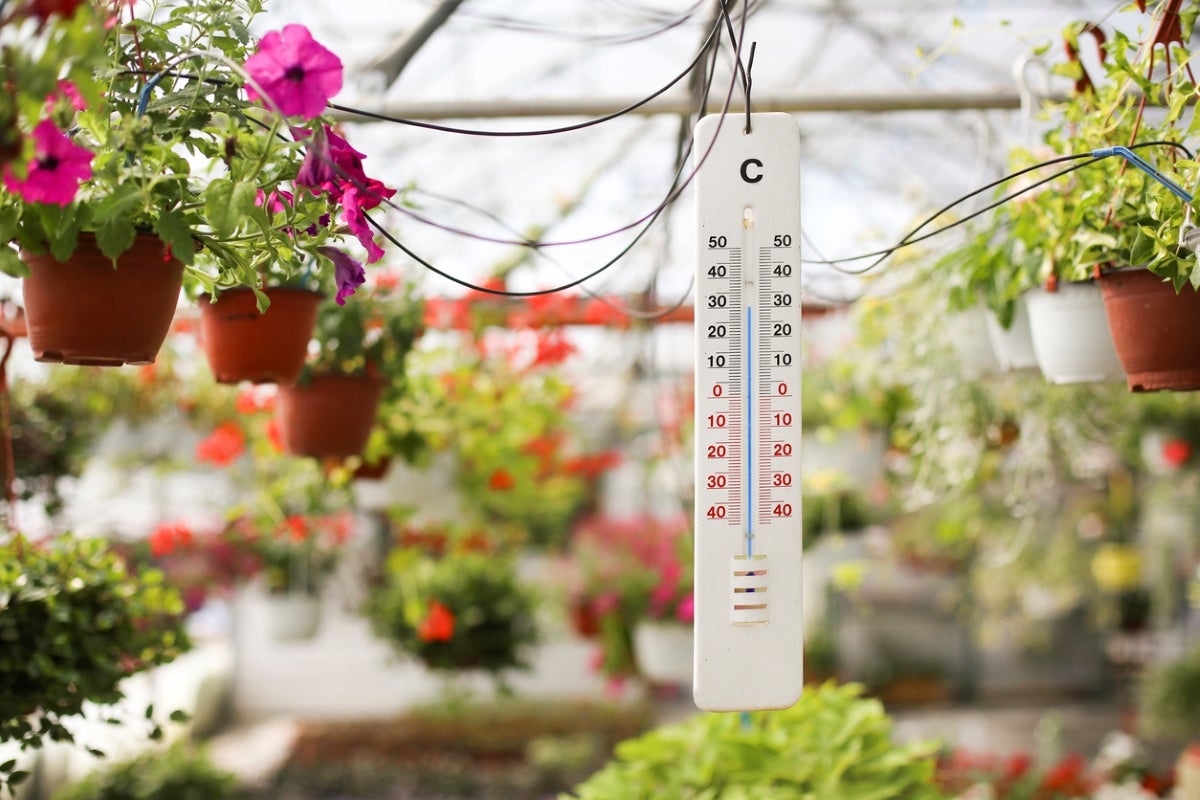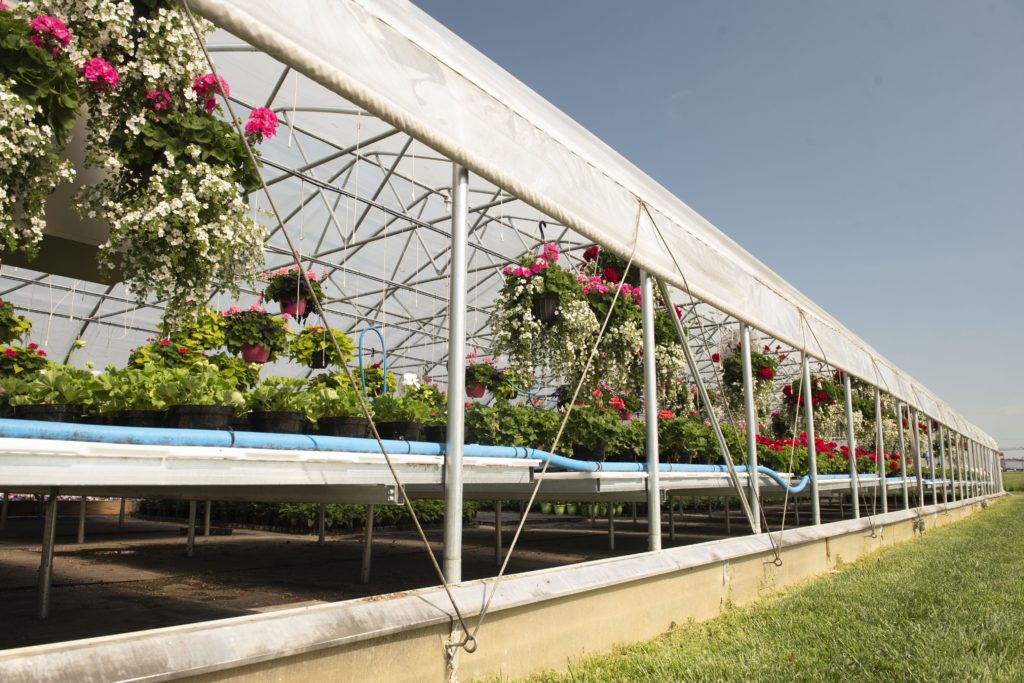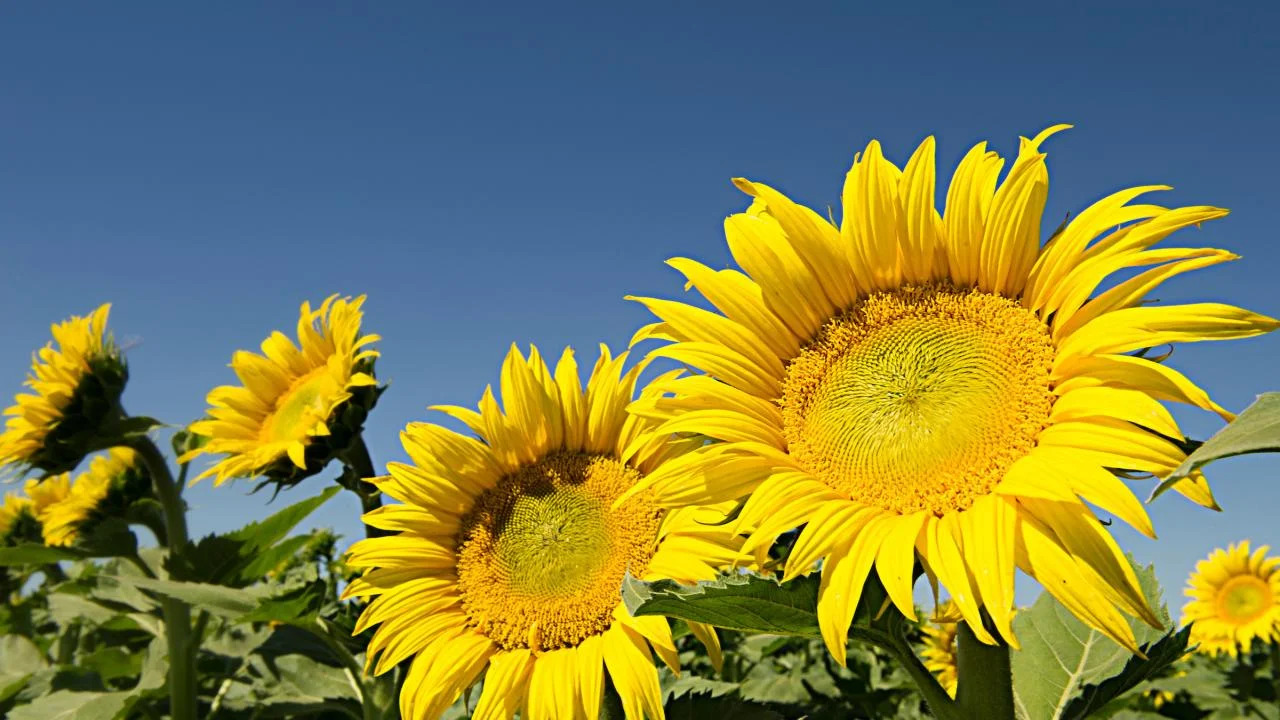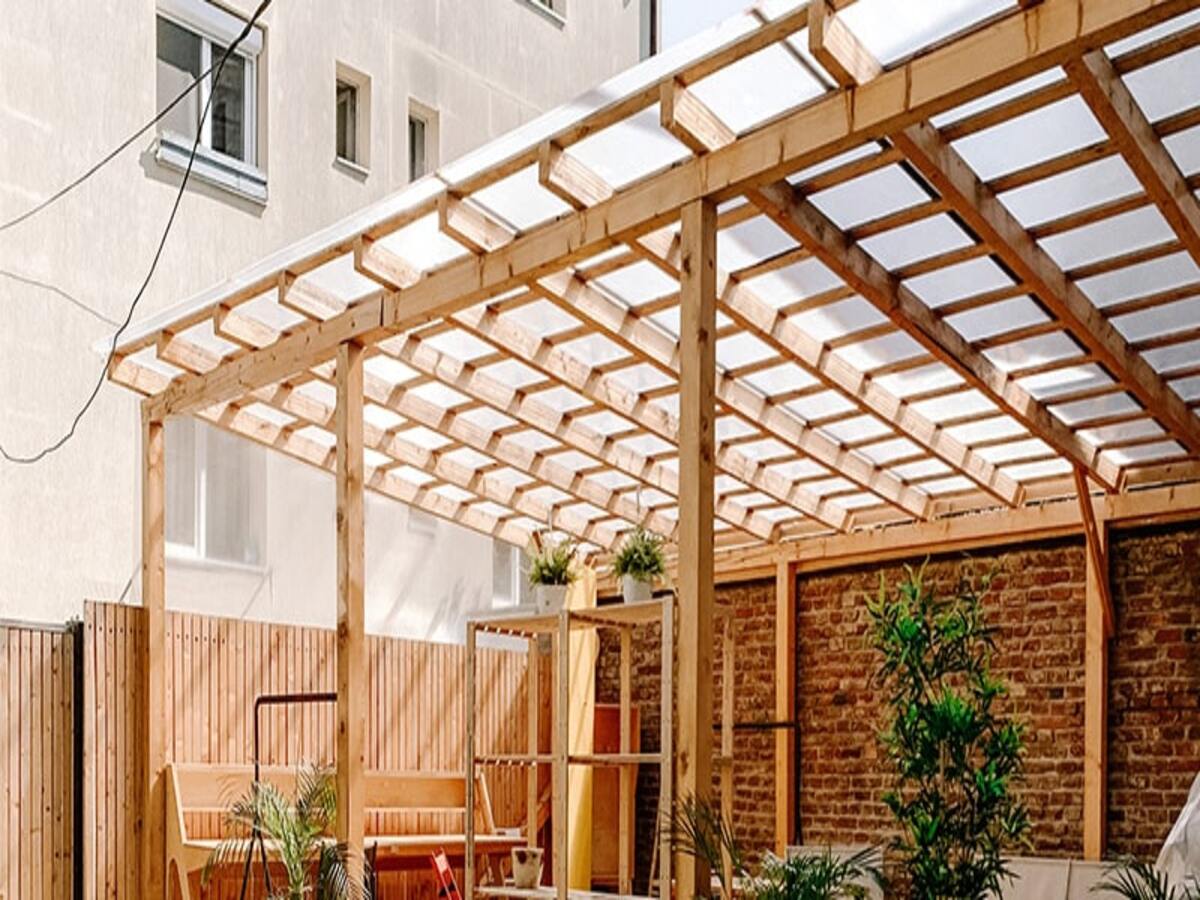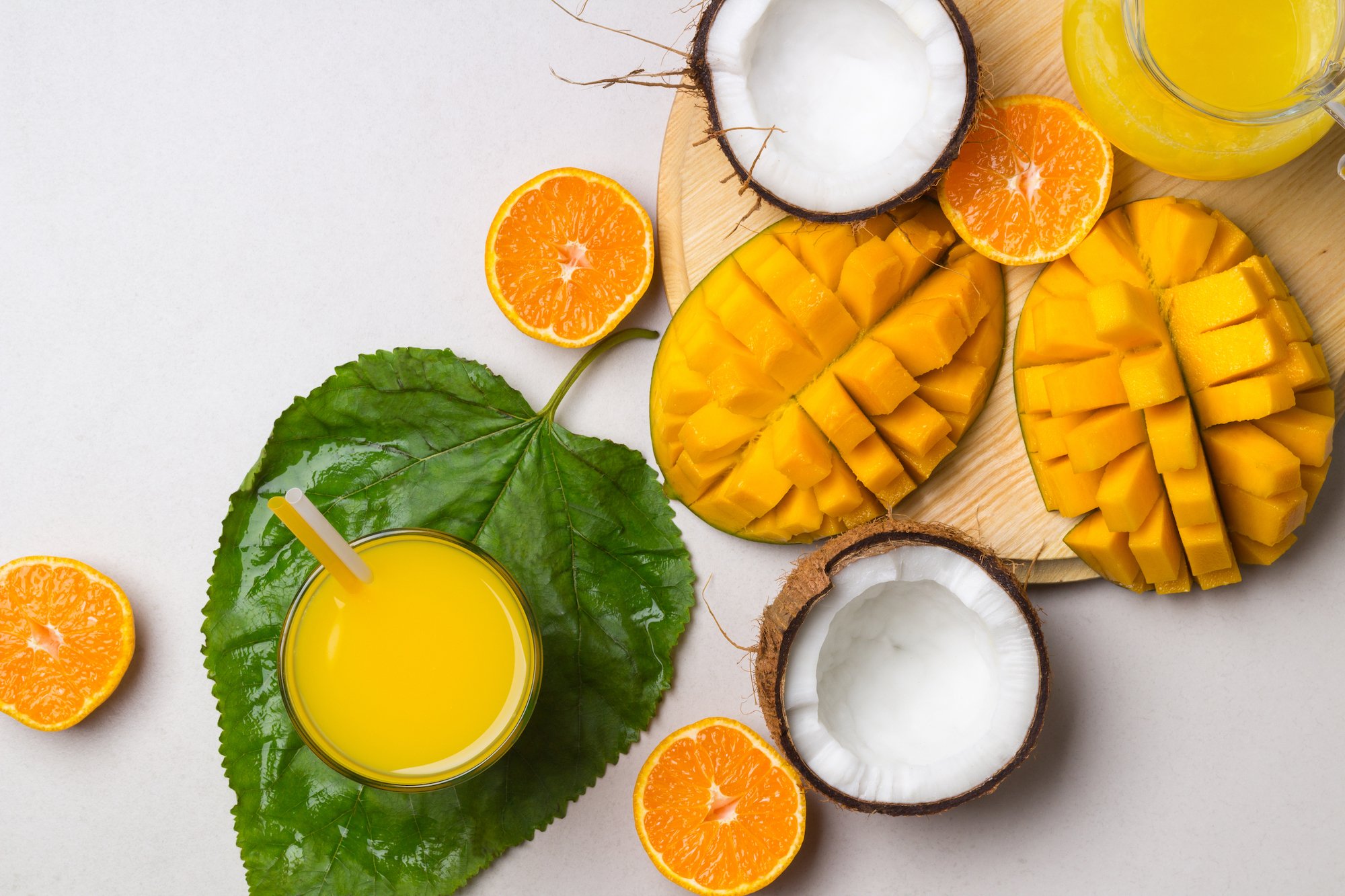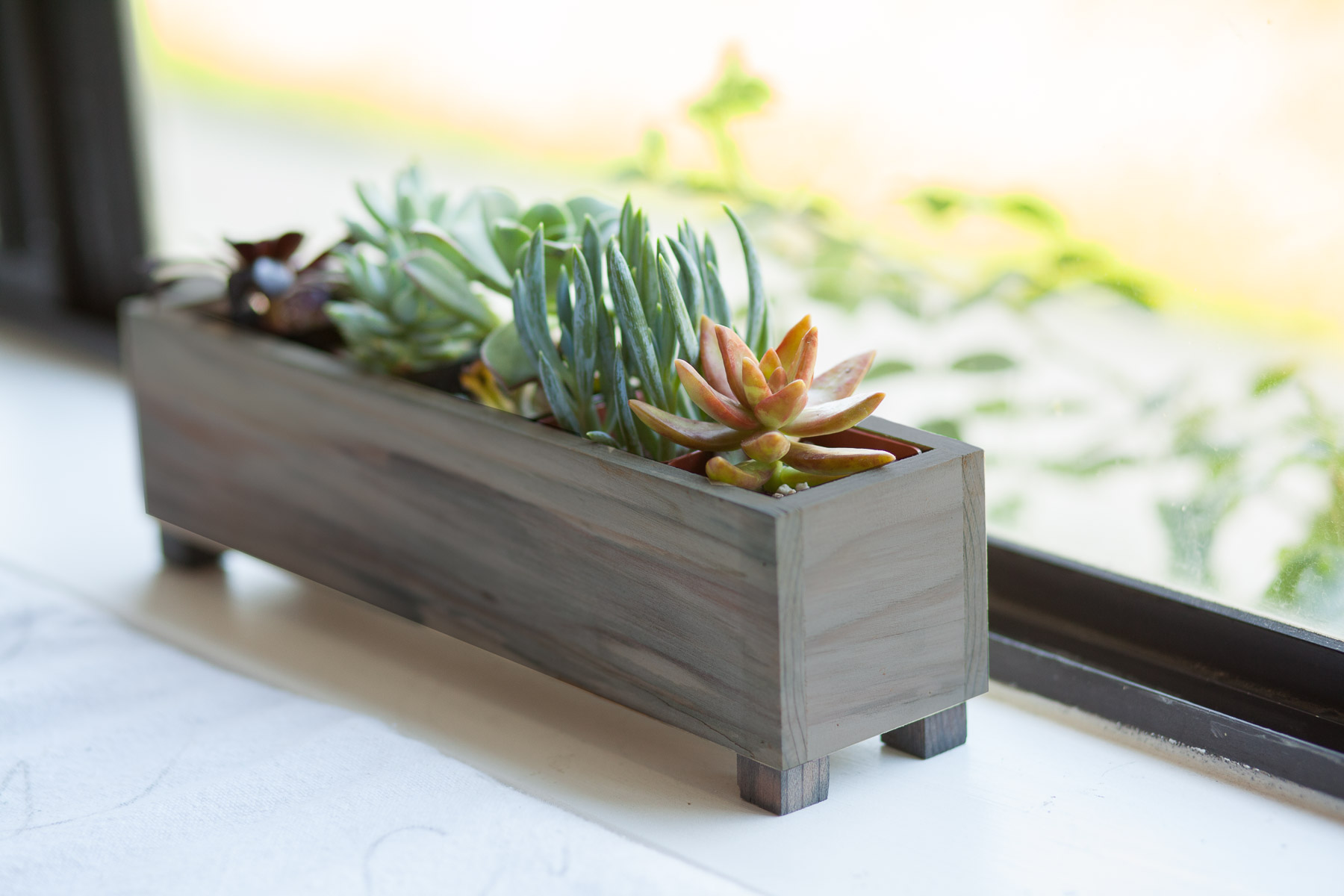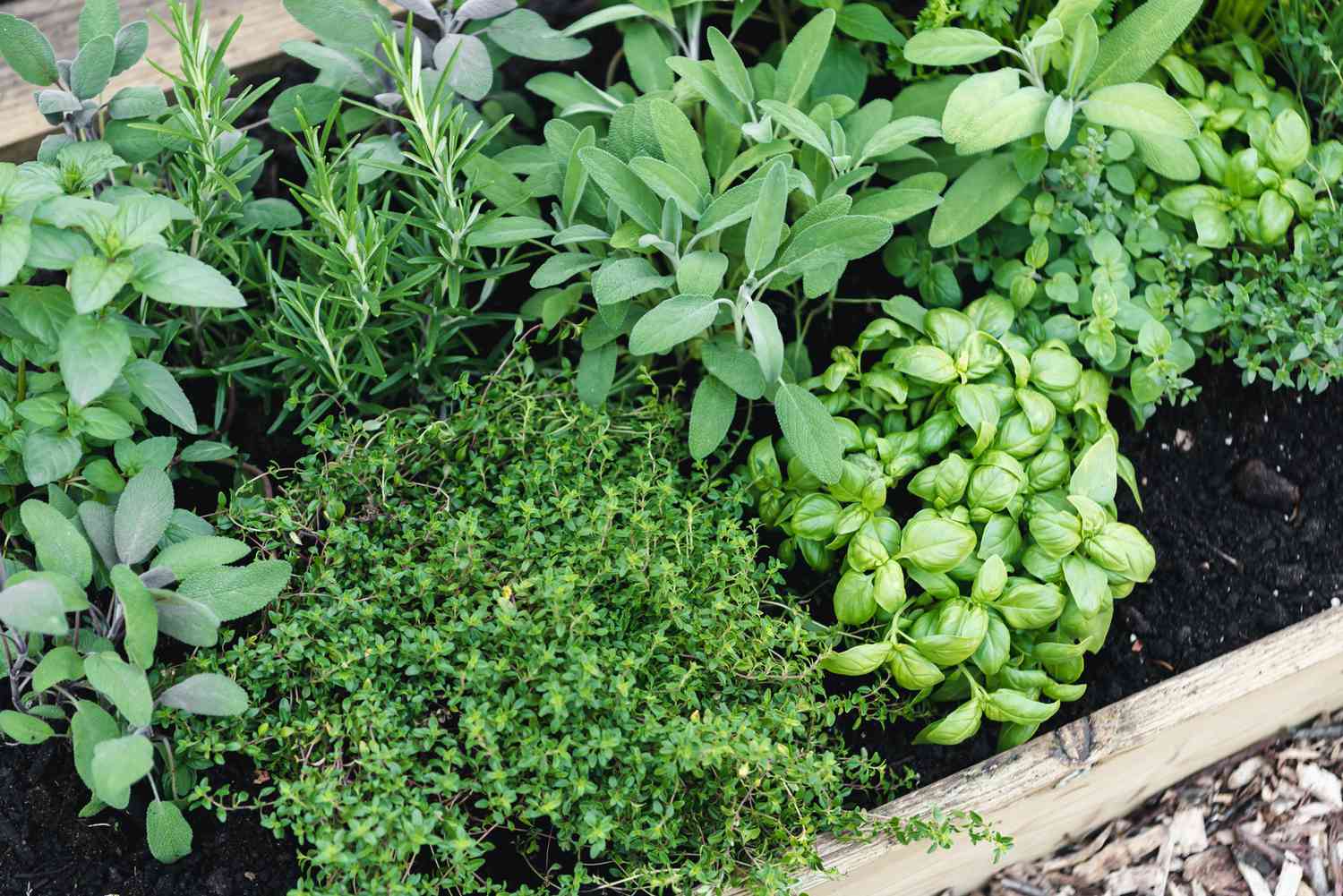Home>Gardening News and Trends>What Direction Should A Greenhouse Face
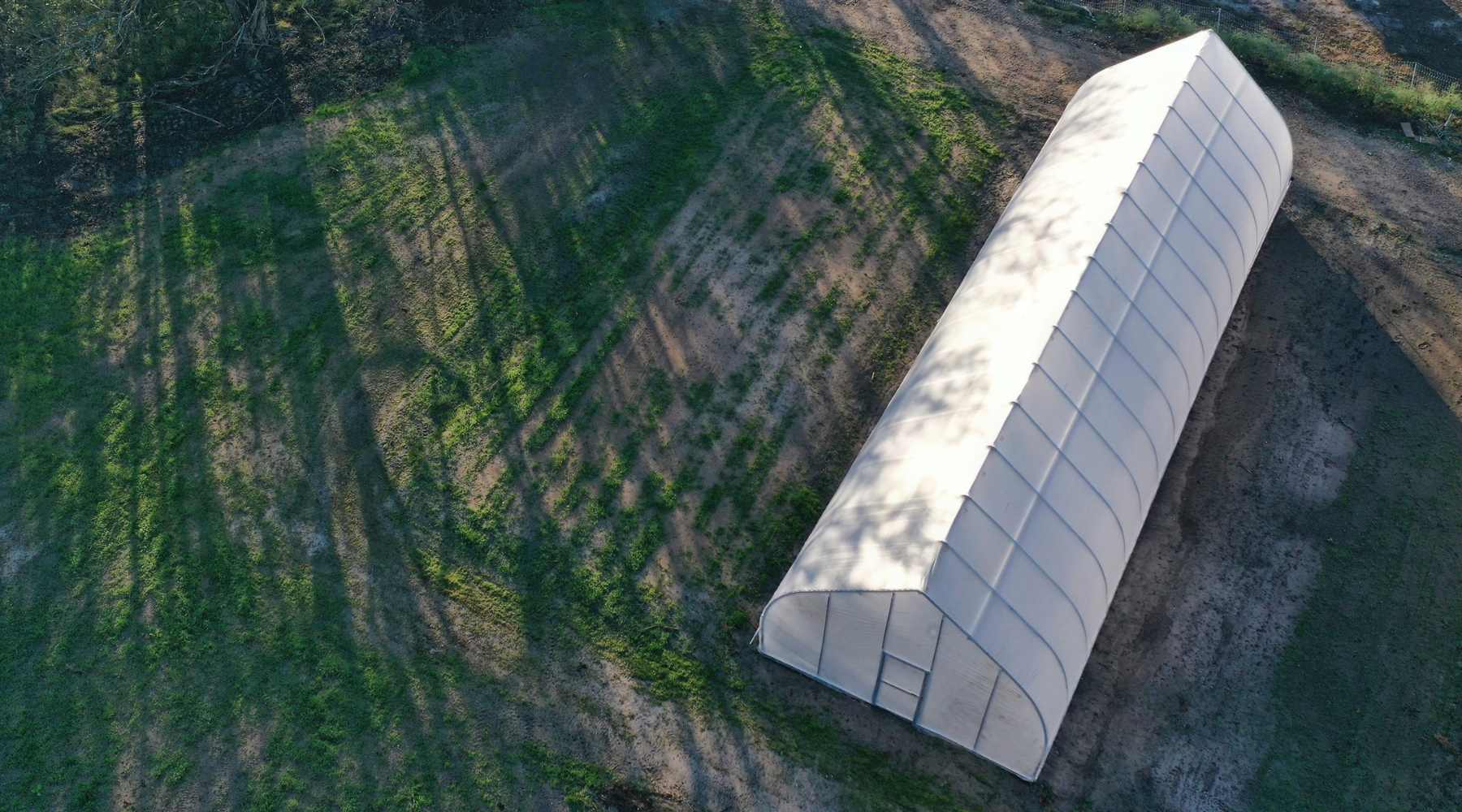

Gardening News and Trends
What Direction Should A Greenhouse Face
Published: August 5, 2023
Discover the latest news on choosing the optimal direction for your greenhouse. Ensure maximum sunlight exposure and efficient plant growth.
(Many of the links in this article redirect to a specific reviewed product. Your purchase of these products through affiliate links helps to generate commission for Chicagolandgardening.com, at no extra cost. Learn more)
Table of Contents
Introduction
When it comes to setting up a greenhouse, one crucial factor to consider is its orientation or the direction in which it faces. The direction of a greenhouse plays a significant role in its overall performance and the success of your plants. A well-oriented greenhouse can take full advantage of the sun’s rays, optimize temperature control, and protect against harsh elements.
Understanding the importance of the direction of a greenhouse and how it can impact plant growth and productivity is essential for any greenhouse enthusiast or professional grower. Whether you are cultivating delicate flowers or growing vegetables for a sustainable garden, knowing which direction your greenhouse should face is vital for optimizing your growing conditions and maximizing the potential of your plants.
In this article, we will explore the various factors to consider when determining the ideal direction for your greenhouse. We will dive into the significance of solar exposure, the role of climate and temperature, and the impact of wind direction. By understanding these factors, you will be equipped with the knowledge to make an informed decision about the orientation of your greenhouse.
Importance of the Direction of a Greenhouse
The direction in which a greenhouse faces is vital because it directly affects the amount of sunlight the plants receive throughout the day. Sunlight is crucial for photosynthesis, the process through which plants convert sunlight into energy. When a greenhouse is properly oriented, it can maximize exposure to sunlight, enabling plants to thrive and grow healthily.
Moreover, the direction of a greenhouse also impacts temperature regulation. With the correct orientation, a greenhouse can efficiently capture and retain heat from the sun, creating a warmer and more stable environment for the plants. This is especially important during colder months or in regions with unpredictable weather conditions.
Another key aspect affected by the direction of a greenhouse is the management of natural elements, such as rain and wind. By properly placing the greenhouse, you can shield your plants from strong winds and heavy rainfall, reducing the risk of damage to your crops.
Additionally, the direction of a greenhouse can play a role in the overall energy efficiency of the structure. By optimizing exposure to the sun, a well-oriented greenhouse can reduce the need for supplemental heating or cooling systems, leading to energy savings and more sustainable growing practices.
Ultimately, the direction of a greenhouse can make a significant difference in the overall productivity and success of your plants. Choosing the right orientation allows you to create an optimal growing environment, ensuring that your plants receive the necessary sunlight, warmth, and protection they need to flourish.
Factors to Consider
When deciding on the direction of your greenhouse, several factors need to be taken into consideration. Each of these factors plays a vital role in determining the ideal orientation for your greenhouse and ensuring optimal growing conditions for your plants.
One of the primary factors to consider is solar exposure. Understanding the path of the sun throughout the day is crucial for maximizing sunlight exposure in your greenhouse. The goal is to have the longest possible duration of direct sunlight on your plants. Analyzing the sun’s movement and the shading patterns created by nearby structures or vegetation will help you determine where the sunniest spot in your garden is.
The local climate and temperature also play a significant role in choosing the direction of your greenhouse. Different plants have specific temperature requirements for growth and productivity. By studying your regional climate data, including average temperatures and prevailing weather patterns, you can select the orientation that will naturally regulate temperatures within the greenhouse, minimizing the need for additional heating or cooling systems.
Another critical consideration is wind direction. Understanding the predominant wind patterns in your area can help you determine the best placement for your greenhouse. By strategically positioning the greenhouse to block or redirect strong winds, you can provide a more sheltered environment for your plants, avoiding damage caused by wind stress or physical breakages.
Additionally, the proximity of surrounding structures or terrain features must be taken into account. Tall buildings, trees, or mountains can cast shadows on your greenhouse, reducing the amount of direct sunlight it receives. Avoid placing the greenhouse in the shadow of these structures, as it will impede adequate sunlight exposure for your plants.
Lastly, it’s important to assess the available space in your garden or backyard. Consider the layout and orientation of your existing landscape and structures. This will help you determine the most practical and efficient placement for your greenhouse, considering factors such as accessibility, aesthetics, and space availability.
By carefully evaluating these factors, you can make an informed decision about the direction of your greenhouse, ensuring that it is optimally oriented for the best growing conditions and maximizing the potential of your plants.
Solar Exposure
Solar exposure is a crucial factor to consider when determining the direction of your greenhouse. Sunlight provides the energy needed for plants to carry out photosynthesis, a process that is essential for their growth and development. Maximizing solar exposure in your greenhouse will result in healthier and more productive plants.
To optimize solar exposure, it is important to understand the path of the sun throughout the day and throughout the seasons. The sun rises in the east, reaches its highest point in the sky around noon, and sets in the west. By aligning the length of your greenhouse along an east-west axis, you can ensure that the longest sides of the structure face south and north to capture the maximum amount of sunlight throughout the day.
However, it is crucial to assess potential obstacles that may obstruct sunlight, such as nearby buildings, trees, or hills. These obstructions can cast long shadows on your greenhouse, reducing the amount of direct sunlight it receives. Observing the shadows cast during different times of the day and different seasons will help you determine the areas of your garden that receive the most sunlight.
Furthermore, the angle of the sun’s rays changes throughout the year. During the winter months, the angle is lower, resulting in shorter days and less direct sunlight. In contrast, during the summer months, the sun’s angle is higher, providing longer days and more intense sunlight. When orienting your greenhouse, consider these seasonal variations in solar exposure and aim to maximize sunlight during both the winter and summer months.
By carefully analyzing the sun’s path, potential obstructions, and seasonal variations, you can determine the optimal orientation of your greenhouse to ensure that your plants receive the maximum amount of sunlight. This will enable them to carry out photosynthesis efficiently, promoting healthy growth and abundant harvests.
Climate and Temperature
The local climate and temperature are crucial considerations when determining the direction of your greenhouse. Different plants have specific temperature requirements for optimal growth and productivity. By understanding your regional climate and average temperatures, you can select the orientation that will naturally regulate temperatures within the greenhouse.
In colder climates, it is beneficial to orient your greenhouse to capture the maximum amount of sunlight during the winter months. This allows the greenhouse to absorb as much heat as possible during the day, providing a warmer environment for your plants. A south-facing orientation is often preferred in such climates, as it receives the most sunlight throughout the day.
In warmer climates, where excessive heat can be a challenge, careful consideration should be given to the orientation of the greenhouse. East or west-facing orientations can help reduce direct exposure to the intense midday sun, preventing overheating. By capturing the morning or afternoon sunlight instead, the temperature within the greenhouse can be moderated, creating a more favorable environment for the plants.
Furthermore, wind can have a significant impact on the temperature within a greenhouse. Cold winds can increase heat loss and initiate frost damage, while hot, dry winds can cause dehydration and stress. Understanding the prevailing wind direction in your area can help you position your greenhouse to minimize the impact of wind on temperature regulation.
It is also essential to consider the microclimate within your garden. Factors such as the amount of shade, reflection from nearby surfaces, and the presence of water bodies can influence the temperature within the greenhouse. Analyzing these microclimatic conditions can help you make informed decisions about the orientation of your greenhouse.
By selecting the appropriate direction for your greenhouse based on the climate and temperature requirements of your plants, you can create a more controlled and stable growing environment. This will allow you to optimize plant growth throughout the year and overcome the challenges posed by extreme temperatures in your region.
Wind Direction
Wind direction is an important factor to consider when determining the orientation of your greenhouse. Understanding the prevailing wind patterns in your area can help you position your greenhouse strategically to minimize the impact of wind on your plants.
Strong winds can have detrimental effects on plants, including physical damage, increased water loss through transpiration, and decreased overall growth. By positioning your greenhouse to block or redirect strong winds, you can create a more sheltered environment for your plants and protect them from wind stress.
Start by observing the prevailing wind direction in your garden or the specific area where you plan to install your greenhouse. Look for indicators such as the bending of trees or the presence of windbreaks. This will help you identify the areas where your plants are most susceptible to wind damage.
Once you have determined the wind direction, you can position your greenhouse accordingly. Placing the greenhouse perpendicular to prevailing winds will reduce the impact of direct wind on the structure and your plants. Additionally, consider incorporating natural or man-made windbreaks, such as fences, hedges, or trees, on the windward side of the greenhouse. These barriers can help filter and redirect the wind, providing a more protected environment for your plants.
While wind protection is important, it is also crucial to ensure adequate ventilation within the greenhouse. Proper air circulation helps prevent the buildup of excessive heat, humidity, and condensation, which can lead to plant diseases. Design your greenhouse with adjustable ventilation features, such as windows or vents, to allow for controlled airflow while minimizing direct exposure to strong winds.
By carefully considering wind direction and implementing appropriate wind protection measures, you can create a more favorable microclimate within your greenhouse, minimizing the risk of wind damage and promoting healthier plant growth.
Orientation Options
When it comes to the orientation of your greenhouse, you have several options to choose from, each with its own advantages and considerations. The orientation you select will depend on various factors, including solar exposure, climate, wind direction, and the layout of your garden or backyard.
One common option is to have an east-west facing greenhouse. With this orientation, the longest sides of the greenhouse face south and north. This allows the structure to capture sunlight throughout the day, maximizing solar exposure. East-west facing greenhouses are especially beneficial in colder climates, as they can absorb more heat during the day and provide a warmer environment for your plants.
Another popular option is a south-facing greenhouse. By orienting the structure directly towards the south, you can ensure maximum exposure to sunlight throughout the day. This orientation is particularly advantageous in regions with cooler climates or shorter growing seasons. A south-facing greenhouse offers the advantage of capturing the most sunlight during the winter months when the sun’s angle is lower in the sky.
For those in warmer climates, an east or west-facing orientation may be more suitable. By capturing the morning or afternoon sunlight instead of the intense midday sun, the temperature within the greenhouse can be moderated, providing a more comfortable growing environment for your plants.
Alternatively, in some cases, a north-facing greenhouse may be preferable. While north-facing greenhouses receive less direct sunlight, they offer more consistent and diffused lighting throughout the day, reducing the risk of heat stress on plants. This orientation is commonly chosen in hot climates or regions where excessive sunlight needs to be moderated.
When considering the orientation of your greenhouse, it is important to evaluate each option based on your specific climate, growing goals, and available space. A combination of factors, including solar exposure, climate and temperature, wind direction, and the layout of your garden, will help you determine the most suitable orientation for optimal plant growth and productivity.
East-West Facing Greenhouses
East-west facing greenhouses are a popular choice for many gardeners and growers. With this orientation, the longest sides of the greenhouse face south and north, allowing for optimal sun exposure throughout the day.
One of the main advantages of an east-west facing greenhouse is its ability to capture sunlight from morning to evening. This ensures that your plants receive a relatively consistent amount of sunlight throughout the day, promoting healthy and balanced growth. The morning sun exposure provides a gentle start for your plants, while the evening sun helps them wind down and prepare for the night.
In cooler climates or during the winter months, an east-west facing greenhouse can effectively absorb and retain heat. The longer side facing south allows for maximum exposure to the low winter sun, which increases the amount of warmth generated within the structure. This orientation helps maintain a more stable and favorable temperature, creating an ideal environment for plants to thrive.
Moreover, the east-west orientation allows for effective natural ventilation. If you install windows or vents on opposite sides of the greenhouse, the prevailing winds can help promote airflow, preventing excessive heat buildup and minimizing the risk of plant diseases caused by stagnant air.
While east-west facing greenhouses offer numerous benefits, it is important to consider potential drawbacks as well. Depending on the specific location and surrounding landscape, shading from nearby structures or vegetation may affect the amount of direct sunlight the greenhouse receives. It is crucial to assess the potential obstructions and ensure that the greenhouse is positioned to minimize shade during critical hours of the day.
Additionally, while an east-west orientation can help regulate temperature, it may require additional heating or cooling systems to maintain the ideal conditions for your plants during extreme weather conditions. It is important to monitor and adjust the greenhouse environment accordingly, especially in regions with harsh winters or scorching summers.
Overall, an east-west facing greenhouse offers a well-balanced approach to sunlight exposure and temperature regulation. It maximizes solar exposure throughout the day, provides optimal natural ventilation, and is particularly beneficial in cooler climates or during the winter season. By carefully considering the specific requirements of your plants and your local climate, you can determine if this orientation is the best fit for your greenhouse.
South-Facing Greenhouses
South-facing greenhouses are a popular choice for many gardeners and growers due to their ability to capture the maximum amount of sunlight throughout the day. With this orientation, the longest side of the greenhouse faces directly towards the south, optimizing solar exposure.
One of the main advantages of a south-facing greenhouse is its ability to capture the full intensity of the sun throughout the day, especially during the winter months when the sun’s angle is lower in the sky. This orientation allows for longer periods of direct sunlight, providing ample energy for photosynthesis and promoting healthy plant growth.
In colder climates, a south-facing greenhouse can efficiently absorb and retain heat. The southern exposure allows the greenhouse to receive the maximum amount of sunlight and warmth, even during shorter winter days. The absorbed heat is then radiated back into the structure, creating a more favorable and stable environment for your plants.
Furthermore, a south-facing greenhouse provides uniform lighting throughout the day, minimizing shading from nearby structures or vegetation. This even distribution of sunlight allows for consistent growth and development of plants, promoting balanced growth and preventing the stretching of stems or uneven flowering.
However, it is important to consider potential challenges associated with a south-facing orientation. In warmer climates or during the summer months, excessive sunlight and heat may be a concern. Adequate shading and ventilation systems need to be in place to prevent overheating and protect your plants from sunburn or heat stress.
Additionally, maintaining temperature control within a south-facing greenhouse can be more challenging compared to other orientations. The increased sunlight exposure can result in higher internal temperatures, requiring proper ventilation and shading mechanisms to prevent overheating and provide the necessary cooling for the plants.
Overall, a south-facing greenhouse offers the advantage of maximum sunlight exposure throughout the day and is particularly beneficial in cooler climates or during the winter season. By carefully considering the specific requirements of your plants and your local climate, you can determine if a south-facing orientation is the best fit for your greenhouse.
North-Facing Greenhouses
While less common, north-facing greenhouses have their own advantages and can be a suitable choice depending on the specific requirements and conditions of your growing space. With a north-facing orientation, the longest side of the greenhouse faces directly towards the north.
One of the main benefits of a north-facing greenhouse is its ability to provide consistent, diffused lighting throughout the day. By not directly facing the sun, the greenhouse avoids excessive heat and intense sunlight, creating a more moderate and shade-rich environment. This can be advantageous in regions with hot climates or where excessive sunlight needs to be moderated.
For plants that prefer indirect or filtered sunlight, such as certain ferns, orchids, or shade-loving crops, a north-facing greenhouse can offer an ideal growing environment. The diffused light throughout the day mimics the natural light conditions under a forest canopy, allowing these plants to thrive and maintain their delicate structure and vibrant colors.
Furthermore, a north-facing greenhouse can provide a more stable and controlled environment for temperature regulation. With less direct sun exposure, the greenhouse tends to have more consistent temperatures, especially during the summer months. This can help prevent overheating and reduce the need for excessive cooling measures.
However, there are some considerations when opting for a north-facing greenhouse. The reduced sunlight exposure may limit the types of plants that can be grown successfully. Sun-loving crops, such as tomatoes or peppers, may not thrive as well in a north-facing greenhouse compared to other orientations that provide more direct sunlight.
Additionally, ensuring adequate supplemental lighting may be necessary, especially during the winter months or in regions with shorter daylight hours. Providing artificial lighting can help supplement the reduced natural light and ensure sufficient light levels for plant growth and development.
Overall, a north-facing greenhouse offers the advantage of providing consistent, diffused lighting and a more controlled temperature environment. It is particularly well-suited for shade-loving plants or in regions with hot climates where excessive sunlight needs to be moderated. By carefully considering the specific requirements of your plants and your local climate, you can determine if a north-facing orientation is the best fit for your greenhouse.
Conclusion
Choosing the correct orientation for your greenhouse is a crucial decision that can significantly impact the success of your plants. By considering factors such as solar exposure, climate and temperature, wind direction, and the layout of your garden, you can make an informed decision to create an optimal growing environment.
The direction of your greenhouse determines how much sunlight your plants will receive throughout the day, affecting their growth and productivity. An east-west facing greenhouse can provide balanced sunlight exposure throughout the day, making it suitable for colder climates. On the other hand, a south-facing greenhouse maximizes direct sunlight and is beneficial for regions with cooler climates or shorter growing seasons.
For those in warmer climates, an east or west-facing orientation can help moderate excessive heat and provide a more comfortable growing environment. A north-facing greenhouse, while less common, offers diffused lighting and a more stable temperature environment, making it ideal for shade-loving plants or in regions with hot climates.
Additionally, considering wind direction and implementing suitable wind protection measures can help prevent damage caused by strong winds and create a more sheltered environment for your plants. Analyzing your local climate and temperature patterns will help you determine the best orientation to maintain desired temperatures within the greenhouse.
Remember to assess the available space in your garden and consider the impact of surrounding structures or obstructions that may cast shadows on your greenhouse. Adequate space, accessibility, and aesthetics are all important factors to consider when deciding on the final orientation of your greenhouse.
In conclusion, the direction of your greenhouse plays a crucial role in maximizing the sunlight exposure, optimizing temperature control, and protecting your plants from harsh elements. By carefully considering the factors discussed in this article, you can determine the best orientation for your greenhouse, providing an optimal growing environment for your plants and ensuring their success.
